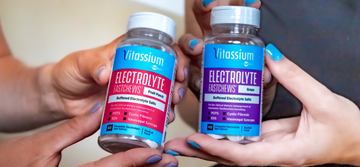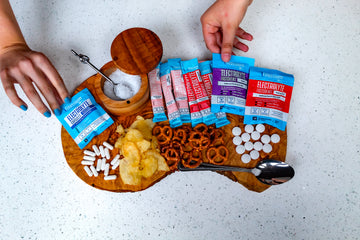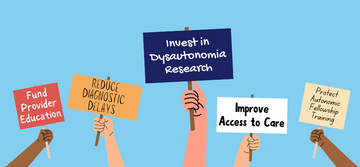
“Drink water and eat a lot of salt!” has long been the advice given to people living with Postural Orthostatic Tachycardia Syndrome (POTS). Data from a new study, published in the Journal of the American College of Cardiology (ACC), continues to demonstrate this may be an effective approach for symptom management.
For many years, evidence has pointed to sodium as tool to help manage common POTS symptoms of low blood pressure, dizziness and fatigue. Most notably, 1996 research published in Heart showed increased sodium intake could help reduce orthostatic intolerance in patients with unexplained syncope (fainting). It was thus natural to conclude similar outcomes for people living with POTS.
However, the scientific community has lacked research examining the effects of sodium intake on people living with POTS specifically—until now.

Source: Journal of the American College of Cardiology
Objective and Methods
In the study, researchers at the Vanderbilt Autonomic Dysfunction Center enrolled 14 participants who had been formally diagnosed with POTS and 13 control subjects, age 23 to 49, in a crossover study. All participants were randomly divided into two groups: A low-sodium group followed a low-sodium diet for six days (10 mEq sodium/day), and a high-sodium group followed a high-sodium diet for the same time period (300 mEq sodium/day). After a month break, the groups were reversed so that the low-sodium group consumed a high-sodium diet and vice-versa—again for six days.
At the end of each six-day time period, the researchers measured participants’ supine and standing heart rate, blood pressure, serum aldosterone, plasma renin activity, blood volume, and plasma norepinephrine and epinephrine. Participants were also asked to report the severity of common POTS symptoms—such as blurred vision, chest discomfort, light-headedness and nausea—after the standing portion of the study.
Results
Among the participants who had POTS, upright heart rate and changes in heart rate were reduced after six days of a high sodium diet compared to a low sodium diet. Total blood volume and plasma volume both increased among the group consuming the high sodium diet as well, while standing norepinephrine (adrenaline) decreased. These results were statistically significant.
There were slightly lower self-reported symptom scores among the high-sodium group; however, the results were not statistically significant. Blood pressure levels were also not found to be significantly different between high-sodium and low-sodium groups.
Importantly, when compared to the control subjects, the participants who had POTS continued to exhibit common POTS symptoms—in particular increased standing heart rate—even on a high-sodium diet. “Treatment with a high-sodium diet, while helpful, is not sufficient to ‘normalize’ patients with POTS,” the researchers write in their paper.
What does this all mean?
You’d be right if your first reaction to this study was to ask, “what exactly is new, here?” In fact, the study’s two main conclusions are what many people in the POTS community already consider common knowledge:
- A high-sodium diet may help reduce POTS symptoms, including standing heart rate, change in heart rate and low blood volume. This is why “eat lots of salt” is often the first pieces of advice given to newly diagnosed patients.
- A high-sodium diet is not the only solution for POTS patients. As anyone with POTS can confirm, eating lots of salt can certainly help improve their quality of life, but it’s not a cure. There is no known cure for POTS, but dietary and lifestyle changes can help. Dysautonomia International provides a fantastic resource of other tips.
However, anecdotal evidence, while important, does not outweigh the validity of rigorous clinical studies. The ACC research is significant in that it was the first to test these assumptions in a formal setting, which supports current medical advice.
Moreover, this study (and future ones like it) can help raise awareness of POTS as a diagnosis and will provide additional evidence to help research, identify and formulate treatment recommendations. As a company that has long supported efforts to find new solutions for POTS—including our partnership with Dysautonomia International since 2016—seeing efforts like this to expand our knowledge is something to celebrate!

Vitassium
If you have POTS, reach out to your doctor about an appropriate option to help manage symptoms. As a medical food, Vitassium provides a scientific formulation of sodium and potassium that was created specifically to help meet the needs of people living with POTS. Each two-capsule serving delivers 500mg of sodium that is easy on the stomach.
If you or a loved one rely on Vitassium for health reasons, consider joining the Vitassium Club to access discounts and free shipping.







